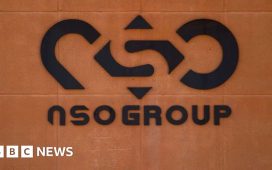It is over 20 years since Concorde’s last flight, and since then the idea of supersonic flight has mostly been grounded.
Many countries have blocked planes from travelling at such high speed due to the disturbance from noisy sonic booms when they break the sound barrier, and the technology is expensive with tickets historically out of reach for all but the richest.
But now interest is again taking off in super speedy planes, and this time they could be more than twice as fast as Concorde.
Last week, startup engineering company Venus Aerospace unveiled an engine it says is capable of super high speed ‘hypersonic’ flight.
This means reaching speeds over five times the speed of sound, so basically an even more powerful version of supersonic, which Concord was.
The Venus Detonation Ramjet 2000 lb Thrust Engine, also known as ‘VDR2’, can reportedly reach speeds of Mach 6, which is six times the speed of sound.
This would be 3,600 miles per hour, making it possible to travel the distance from London to New York (3,400 miles) in just one hour.
Venus Aerospace say they are planning a test flight next year along with aerospace company Velontra, with the intention of ‘unlocking the high-speed flight economy’ for both commercial and defence aircraft.
The plane will fly higher than traditional aircraft, taking off using traditional jet engines but then transitioning to rockets once it reaches altitude.
While not technically on the edge of space, it will fly high enough to see the planet’s curve and the blackness of space above it.
Unveiling the new engine at the Up.Summit, Venus Aerospace co-founder Andrew Duggleby said: ‘This engine makes the hypersonic economy a reality. We are excited to partner with Velontra to achieve this revolution in high speed flight, given their expertise in high-speed air combustion.’
Eric Briggs, Velontra’s Chief Operating Officer, said: ‘We can’t wait to dig in, make the first one fly, and ultimately perfect an engine concept that has lived mostly in textbooks but never as a production unit in the air.
‘We couldn’t think of a better partner than Venus. Rocketry pioneers in their own right, and ready to tackle the hard problems, we are eager to fly the same path with them.’
These are not the only companies eager to pioneer the technology.
Sierra Space and Hermeus are among those also working on the technology, while Chinese company Space Transportation is also reported to be developing a ‘rocket with wings’ for both space tourism and intercity travel.
If such planes to become available for commercial flights, they would be very different to the big planes we’re used to in the EasyJet era.
They would be much smaller, without windows, and have been designed to reduce the noise from sonic booms to more of a sonic thump, though would likely still have to take routes above the ocean to reduce noise disruption over land.
Get in touch with our news team by emailing us at webnews@metro.co.uk.
For more stories like this, check our news page.
MORE : Why MI6 is banning future spies from using AI in job tests
MORE : How three extinct animals could be brought back in just four years
MORE : Commercial jet comes terrifyingly close to barrage of Iranian rockets
Get your need-to-know
latest news, feel-good stories, analysis and more
This site is protected by reCAPTCHA and the Google Privacy Policy and Terms of Service apply.













